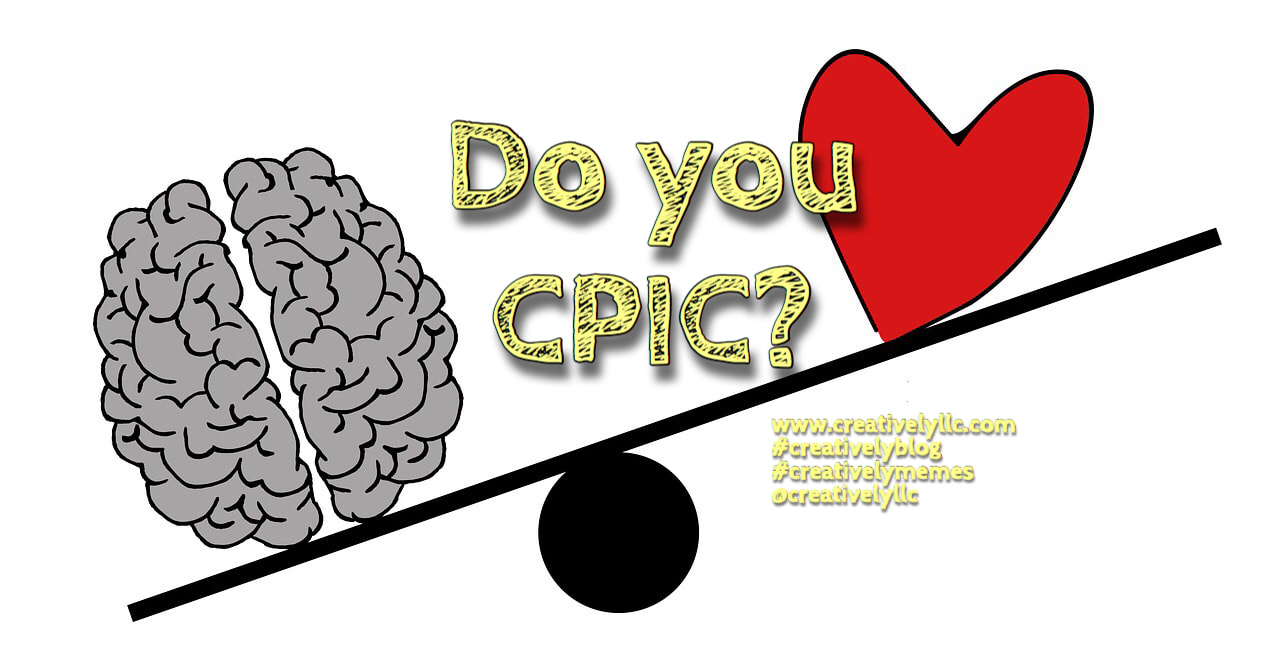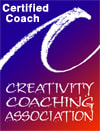|
Hello, Creatives. In addition to working with Creative People one of my clinical specialties has been working with anxiety disorders- and for many reasons it is not uncommon for creative people to be anxious. So, in this week’s Creatively Blog, I bring you a self-coined term I have identified from working with anxiety to help you understand some ways you may be compensating.
Let’s start with some basic information about anxiety. Anxiety indicates a physiological aroused state where your body- to varying degrees- is perceiving and preparing for a threat. Anxiety is an emotion that activates your limbic system- some of your more basic brain functions live here- something I talk about in session as “lizard brain.” More or less, anxiety acts as a switch, either activated or inactivated. The prevailing psychological model for reducing anxiety is exposure response prevention, or, gradually reducing sensitivity to physiological arousal to perceived threats. Anxiety can be summarized as how sensitive our body is to activating emergency response mechanisms when a threat is perceived- and this sensitivity is largely inherited but also can be impacted and changed by life events (eg trauma). A frequently used set of terms in anxiety treatment are “triggers” (what makes you anxious) and “coping skills” (how you manage that anxiety). Some of these are fairly universal and some are more individualized. A coping skill that I see a lot, and that is frequently subconsciously used, is increasing the level of control (type A, much?) to offset the feeling of anxiety. An exacerbation of this relationship can be seen in classic OCD presentations. Anxiety is not always bad and in fact evolutionarily the emotion functions to keep us prepared and safe. Unlike many other emotions, it is not an emotion that you can “stop” from doing- in fact trying to “stop” anxiety may worsen it. Ultimately the best anxiety strategy is to not over-attend or feed into the cycle; allowing it to run its course, and reducing its overall severity and disruption is key. For more about anxiety, reference the “Pet your Inner Cat” blog post about self soothing and self care- a place I usually start treatment with most of the anxiety diagnosed clients that I treat. For more about anxiety and creative people, reference the “Creative People, Anxiety and Intuition” blog post. Now that you have some basic information, let’s move on to the phenomena I started to observe. Like many things in clinical work, I noticed it together with a patient during a breakthrough in session, which allowed me to see it again with another patient, and then another, and so on. Before I knew it, there was a behavior or series of behaviors I was watching my anxious clients engage in as a way to cope with their anxiety, which ultimately once labeled could serve them to identify the worsening or a change in their anxiety symptoms. What I noticed I began to call the “Control Perceived Imbalance Correction” or “CPIC” (pronounce see-pick). In my overview to anxiety I said that subconsciously many anxious people balance or offset their anxiety with control- they believe- usually erroneously- that by increasing control over something they can also increase control over a different thing. Often we feel excess anxiety about things we cannot control, and to offset this it feels good to take control of something else. For example- a person may be feeling anxiety about increased tension in their marriage- a perceived loss of control- and so to correct this imbalance they binge eat- an over use of a coping skill psychologically used to restore control or correct the imbalance. Sometimes there is a sense of self-fulfilling prophecy or self-sabotage- someone may be feeling a loss of control of personal finances, and to correct the perceived imbalance of control go on a shopping spree. On a psychological level they are taking control by doing what they want with money, but in a literal way of course worsening the stressor. CPIC is one, driven by the emotion of anxiety and not by logic, and two, is usually subconscious, and this combination can be problematic. Once I see this relationship with a client, I can help them identify the imbalance correction (eg overspending, overeating etc) and this can be used by the client to pinpoint the source of stress in the future and change course sooner. This is one reason why in therapy I will usually ask you about your week- anything unusual? How have you been sleeping, eating, etc? I am looking for evidence of changes in your life. CPIC is a bit more of a cerebral concept, but, I have found it very useful to my clients once applied. It is certainly something easier to unravel individually by example and through deduction and fact rather than hypothetically and conceptually in writing- and so I invite you to come sit on my couch and learn about yourself, Creative! Come start creating your best life. (C) 2018 Creatively, LLC Comments are closed.
|
get more from The Creativity CoursesLiking educational topics and knowing what's hot in creativity? Creatively has online courses, with an interactive creative community, coaching sessions and more in the Creativity Courses. Want these blogposts in a newsletter? Subscribe here, and get a free gift. Cindy Cisnerosis a Creativity Coach, Creative Therapist and Professional Artist in Sykesville, Maryland. She is an expert straddling the realms of arts, creativity research, psychology, therapy, and coaching. She provides Online Creativity Counseling in Maryland and Virginia, and Online Creativity Coaching throughout the USA, Canada and the UK tailored for the discerning, imaginative, artistic, and neurodiverse. The information provided in this blog is from my own clinical experiences and training. It is intended to supplement your clinical care. Never make major life changes before consulting with your treatment team. If you are unsure of your safety or wellbeing, do not hesitate to get help immediately.
Archives
July 2024
|
|
Concierge Therapy for Creatives in Maryland
Creativity Coaching Worldwide including the USA, UK and Canada |
Telephone |
|


 RSS Feed
RSS Feed

